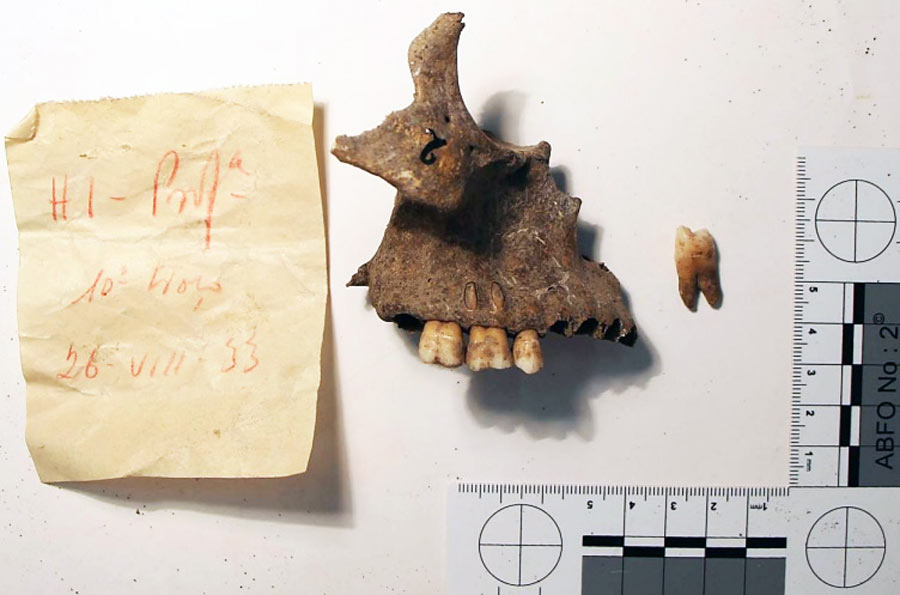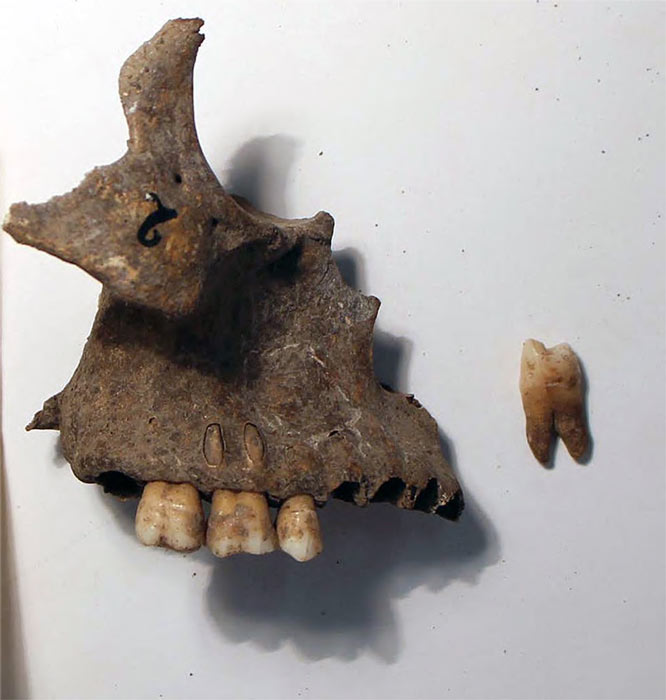

In an intriguing discovery, the remains of an African man who died just 350 years ago have been found buried in a prehistoric shell midden in Amoreira in Portugal. The middens in Amoreira and other sites in the Muge region are known to archaeologists as cemeteries of the last hunter-gatherers who lived there 8,000 years ago. The study of the Stone Age burial site in Portugal and the unexpected African remains, conducted by researchers from Uppsala University and Universidade de Lisboa, was published in the Journal of Archaeological Science.

Analysing the African remains unearthed at the Amoreira Stone Age burial site in Portugal. (Uppsala University)
How Did African Remains End Up in a Portuguese Stone Age Burial Site?
Biomolecular archaeology was employed to study the ancient DNA and was combined with historical records to investigate the Stone Age burial, according to a press release by Uppsala University. The interdisciplinary approach has led to many interesting findings about the African man’s provenance, purpose and reasons for interment in a prehistoric cemetery.
The researchers were able to determine that the bone remains belonged to a first-generation African, probably from the Senegambia region in Western Africa that includes present-day Senegal, Gambia and Mauritania. His genetic signature revealed his African ancestry, while the dietary isotope analysis indicated that for most of his life his diet had included plant foods that were common in Senegambia but weren’t found in Portugal at the time.
He also consumed some amount of low trophic level molluscs, it was found. The researchers also looked at the oxygen isotopic signal in the bone bioapatite, which reflects the ingested water at the place of origin. Bioapatite is a form of calcium phosphate that is the major component of the mineralized part of vertebrate teeth, ABP reports. This allowed them to pin his origin down to the coastal areas of western Africa.
The man, the team concluded, was probably transported from Africa to Portugal via the trans-Atlantic slave trade. The slave trade was a more than three-century-long savage practice which took place between the 16th and 19th centuries, brutally capturing Africans and transporting them to Europe and the Americas to be sold as slaves. The team put down the African man’s death to some time between 1630 and 1760 AD.

Maxilla and tooth from the specimen excavated at Cabeço da Amoreira in Portugal, used for biomolecular analyses in this study. (Rita Peyroteo Stjerna)
Why Was a He Buried in a Prehistoric Cemetery?
The team was able to establish that the man died around 350 years ago. Why, then, was he buried in a Stone Age burial site? Forced to adopt a new religion, a new name and a new language, the dislocated African communities in Europe developed strategies to safeguard their roots, identities, culture and values. Similar practices by African communities have been chronicled in the Americas.
The midden burial was possibly an example of such an attempt to maintain a continuity with their African beliefs and burial practices, although there are no historical records of this particular practice. Local people are likely to have known of ancient cemeteries like Amoriera owing to the presence of human and animal bones there. In Portugal from medieval times to the mid-19th century most burials took place in consecrated grounds but, unusually, this one did not. The grave seems to have been prepared with a layer of sand, indicating that it was an organized burial to an extent.
The researchers found that shell midden burials are practiced in West Africa till this day in unbroken continuity with the past. In the Senegambia region in particular, modern cemeteries as well as ancient ones are often located in shell middens, and this one could have been deliberately chosen by the African community in Amoriera as a meaningful site rather than a seemingly random one.

Map showing location of Stone Age burial site in Portugal, and the estimated area of origin in West Africa of the African remains unearthed there.(Petroteo-Stjerna et. al. / CC BY 4.0)
Who Was the Amoriera African?
While the researchers were able to establish with a degree of certainty that the man was a first-generation African who had arrived in Portugal during the time of the trans-Atlantic slave trade, they tried to go further to establish his specific identity. They stumbled upon a clue in the form of a historical document in the local church, dated 1 November 1676, talking of the murder of a young man named João at Arneiro da Amoreira, exactly where the bone remains were found. However, the church registers record that he was buried in the churchyard, whereas the remains were found in the prehistoric midden.
Another inconsistency was that the church records described João as being brown or dun, pointing to an interracial ancestry, whereas the DNA analysis by the researchers established the bones as belonging to an individual with two African parents. At present, there is no additional evidence that tips the scales either way. Is the concurrence between the site of the murder and the discovery of the bone remains mere coincidence or is it incompleteness or lack of accuracy of the historical records that is causing discrepancies in identification of the bone remains as belonging to the murdered man? More conclusive documentary evidence may be found sometime in the future.
However, the scientists are quite upbeat about all the aspects that their multidisciplinary investigation has brought to light in relation to the life and death of the first-generation African individual transported to Portugal as a slave some time in the 17th or 18th century, and later found buried in a Stone Age burial site in Portugal. They feel that a mere archaeological study of the skeletal remains by itself would not have been able to do as much and they point to the importance of such research to understanding individual life histories of Africans in early modern Europe.